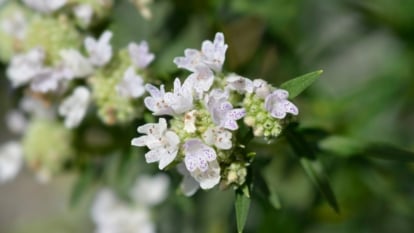If your home has arched entryways, stucco or adobe brick walls, ceramic tile, wrought iron railings, and a clay tile roof, it was most likely influenced by the architecture of Spain. We often refer to these dwellings as Southwestern, Mission, Mediterranean, or Pueblo-style homes, and they are truly a feast for the senses.
Taking its cues from the home it surrounds, a Spanish-style garden is a visual, olfactory, auditory, and tactile experience. Like other European landscape designs, its lines and shapes are typically geometric and mostly symmetrical, but there is less rigidity and more emphasis on free-flowing plant form.
Enclosed in a courtyard or bordered by a stone wall, a Spanish-style garden typically includes some kind of central water element, like a fountain, and maybe some statuary. It features heat-tolerant flowering plants, succulents, and shrubs, as well as fruit trees, vegetables, and herbs. It often employs a vine-draped pergola or arbor to provide relief from the sun.
Planning a garden for your Spanish-influenced home is relatively easy if you follow these general guidelines for structuring the landscape and select warm climate plants that are appropriate to the region. To help you with that task, we’ve pulled together photos and growing information on 27 of our favorite plants for a Spanish-style home.
California Poppy
Mission Bells California Poppy Seeds
Rosemary Seeds
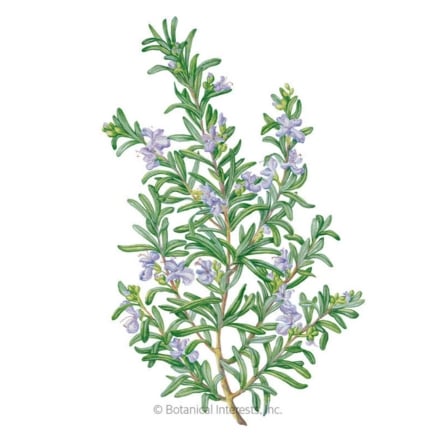
Rosemary (Rosemarinus officinalis) Seeds
San Marzano Tomato
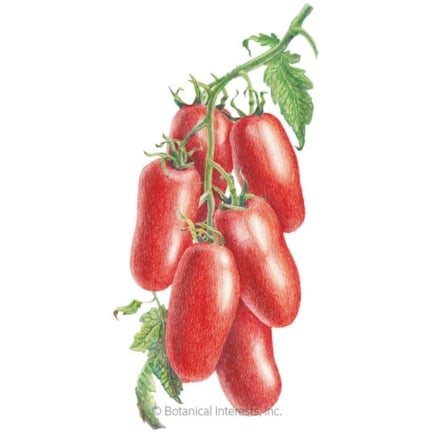
San Marzano Roma Pole Tomato Seeds
Common Olive
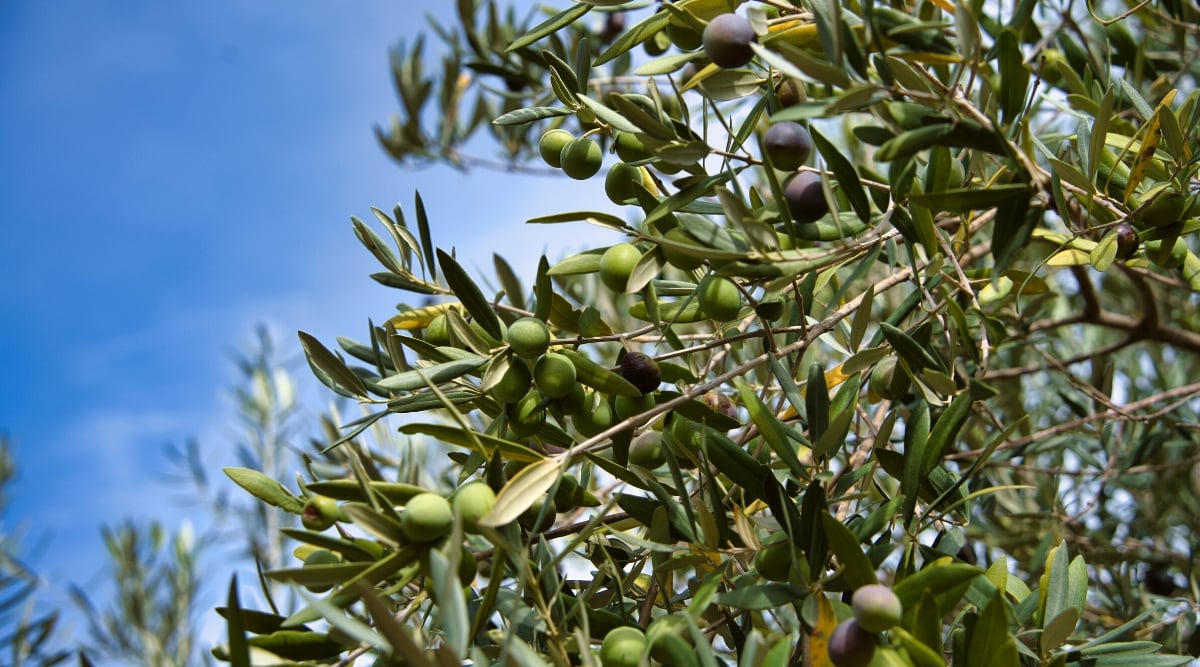
This native of Spain performs well as a small shade tree, offering relief from the scorching sun, but it can also be trained as a topiary or grown in a container. Favored in Europe for being the highest-yielding olive tree, the common olive is a must-have outside the Spanish-style home.
Its leaves are silver-gray and leathery with a long, elliptical shape. In spring, small white flowers fill the courtyard with a sweet, light scent before giving way to olives in fall. Plant ‘Little Ollie’ in a small-scale landscape or ‘Swan Hill’ where a fruitless specimen is preferred.
Bougainvillea
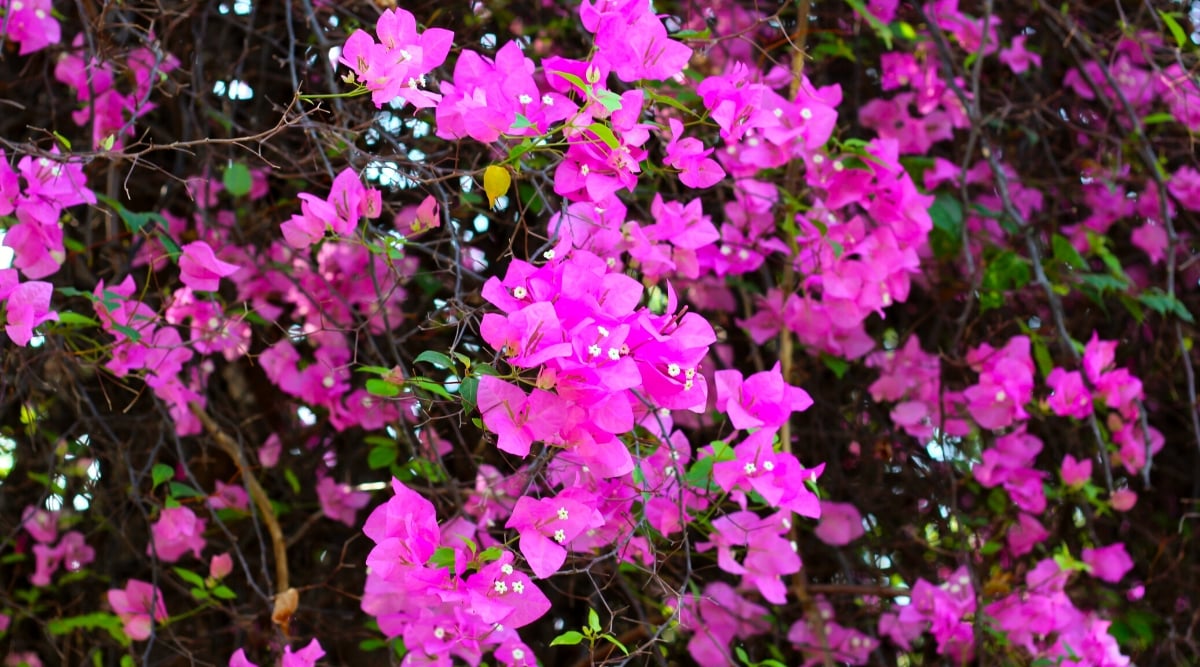
This trailing, woody vine scrambles up a stucco wall or the side of an arbor with ease, but can also be pruned as a shrub. Featuring brightly colored, three-part flowers in hues of yellow, pink, purple, red, and white, bougainvillea is a showy plant that lends a bit of romance to the Spanish-style landscape and blooms all season long.
It enjoys full sun and well-drained soil that is slightly acidic. ‘Orange King’ has a bright, sunny disposition, while ‘Singapore White’ offers crisp neutrality.
Tropical Hibiscus
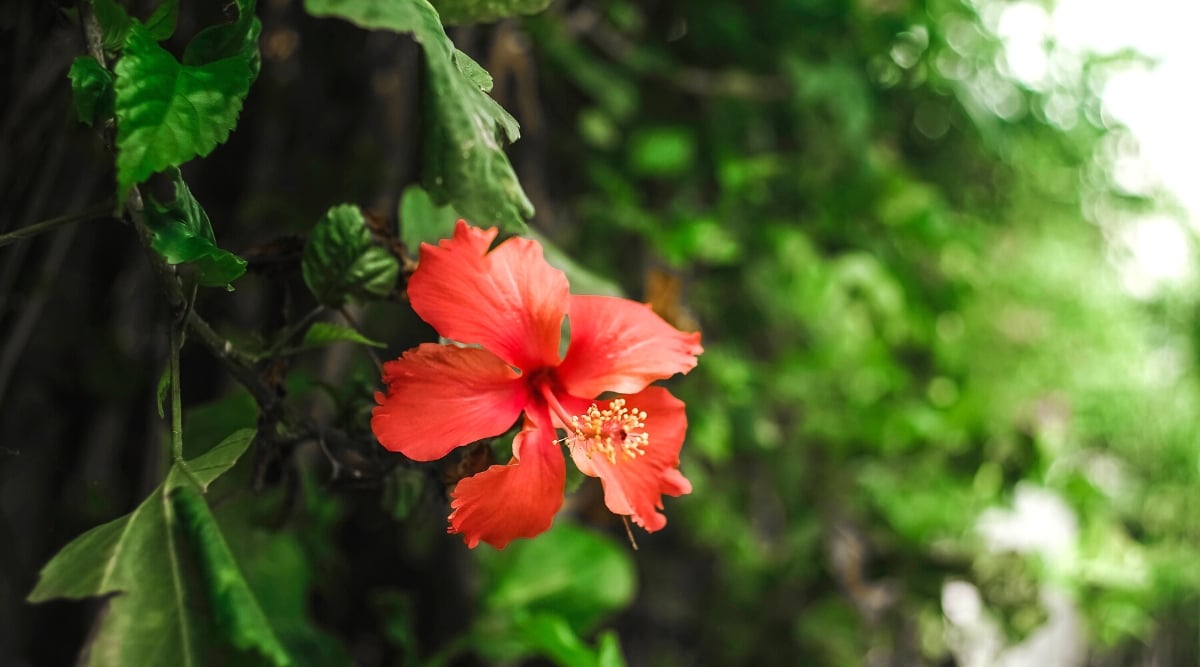
Tropical hibiscus is a dramatic plant featuring six-inch trumpet-shaped blooms in hues of red, pink, white, yellow, and orange. Each flower opens for just one day before wilting and dropping off, but hibiscus blooms steadily and prolifically for the duration of the season. Its shrub-like habit, dark oversized leaves, and preference for humidity and high heat make hibiscus a must-have in the Spanish-style garden.
Mandevilla
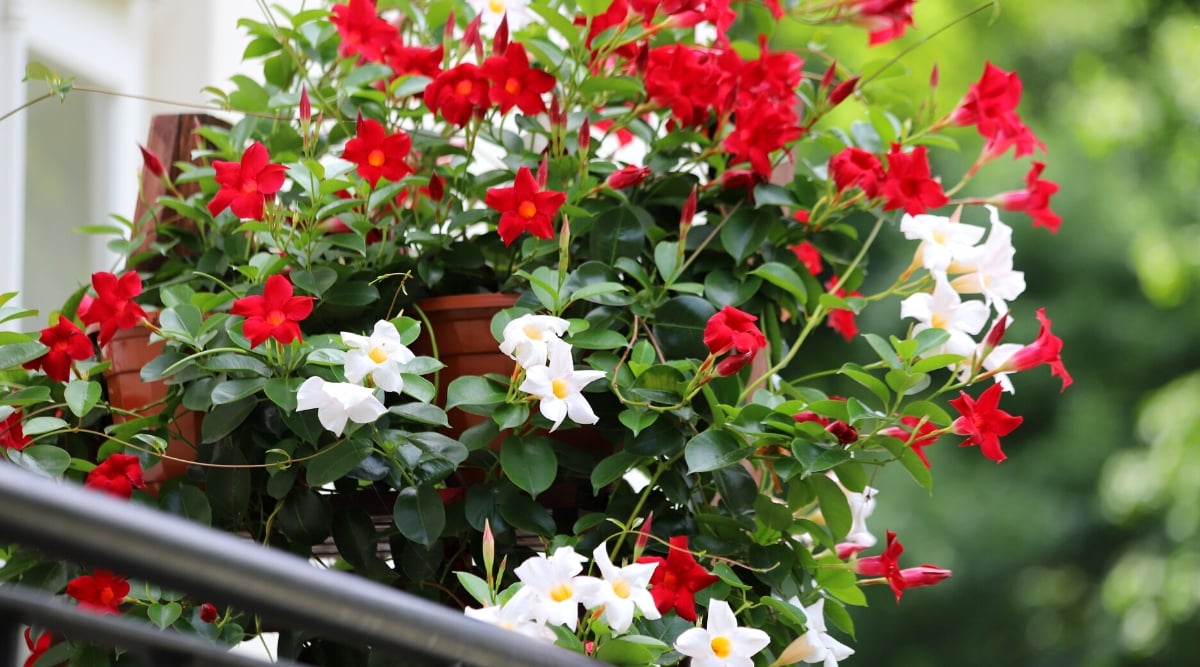
Mandevilla is another trailing tropical plant that hits all the right notes in a Spanish style home garden design. It has five-petaled flowers that average five inches in width and come in shades of red, pink, yellow, and white. As a semi-soft vine, it clings by tendrils and grows happily up a trellis or wrought iron railing. It can also sprawl horizontally as a ground cover or you can groom it like a shrub.
Mandevilla enjoys some relief from the hot afternoon sun, so it’s best planted in locations with southeastern exposure or late-day shade.
Geranium
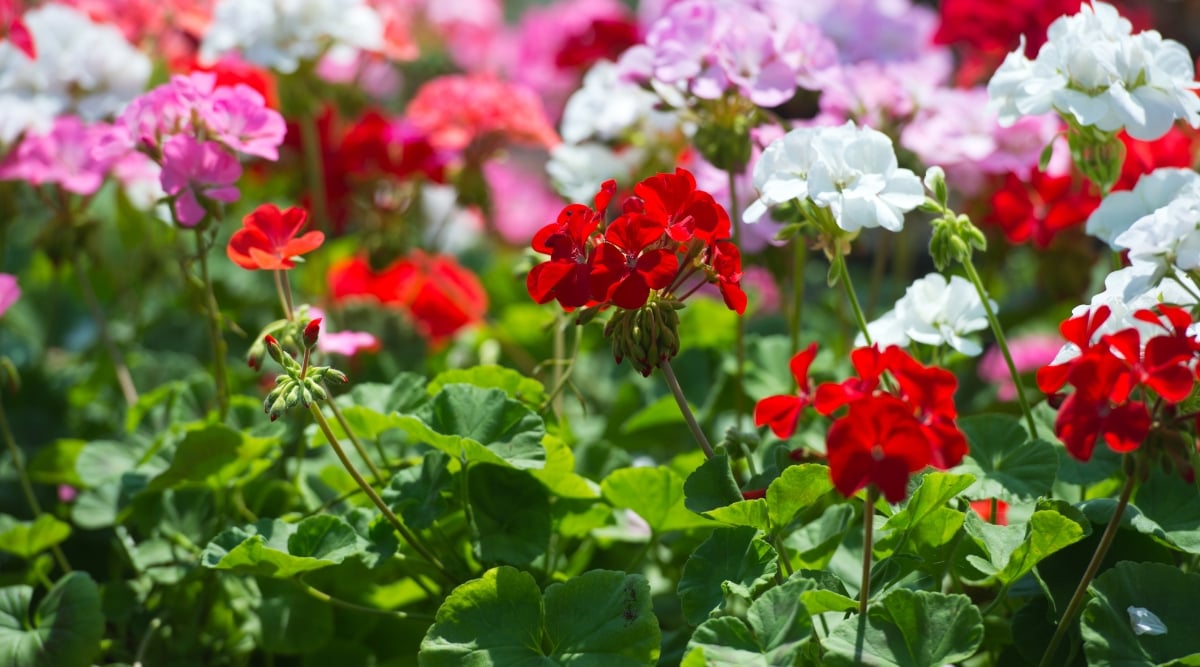
Though it is grown as an annual in most parts of the world, traditional geranium is perennial in zones 10 and 11 and is well-suited to the climate in Spain. Its loose, mounding habit and spicy scent make it a popular choice for a simple terra cotta container display, but it can also be planted en masse for a ground cover of red, pink, or white flowers that keep coming all season.
This plant perfectly complements a Spanish-style home with beautiful pops of color that require very little maintenance. Plant an ‘ivy’ variety for a free-style cascade of beautiful blooms or an ‘angel’ hybrid for a smaller, more violet-like flower size.
Lantana
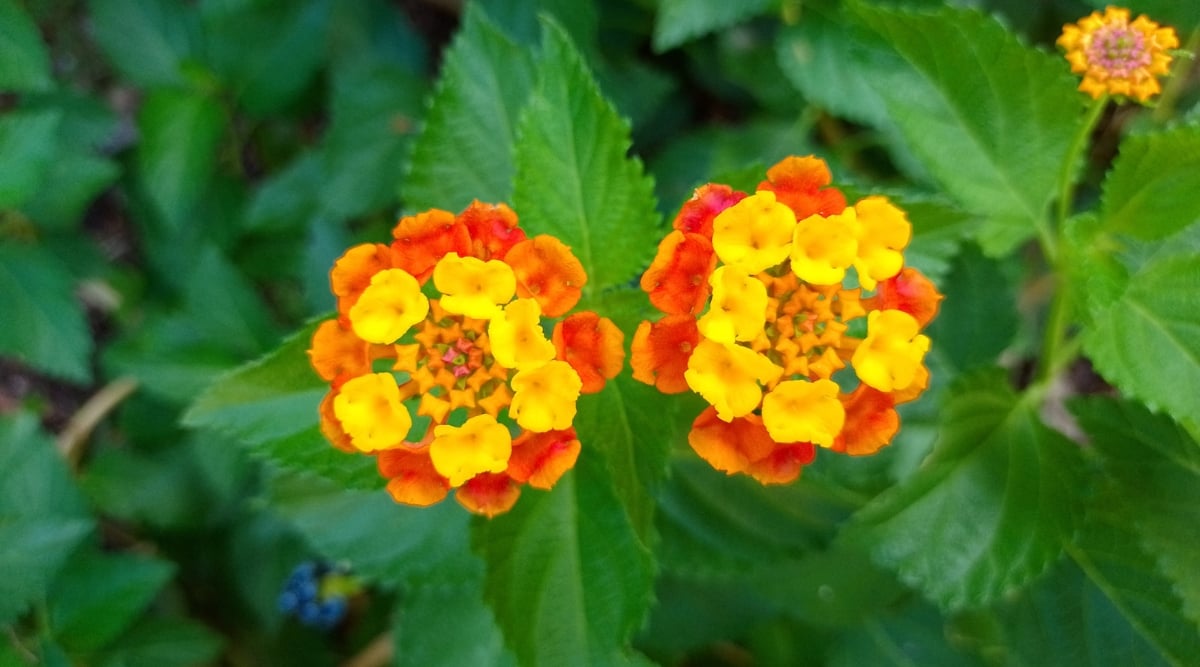
This cheerful flowering shrub offers abundant clusters of yellow, red, orange, and white flowers, sometimes on the same plant. Its leaves are oval with serrated margins and remain evergreen in warm parts of the globe.
Lantana looks lovely spilling out of a terra-cotta planter or softening the edges of a stone fountain. This plant tolerates poor soil and periods of drought, making it ideal for the Spanish-style home landscape. Let ‘Bandana Trailing Gold’ droop whimsically from a hanging basket, or try ‘Little Lucky Peach Glow’ for a smaller stature and salmon-pink flowers.
If you live in a region where lantana is invasive, container planting is your best bet.
Canna Lily
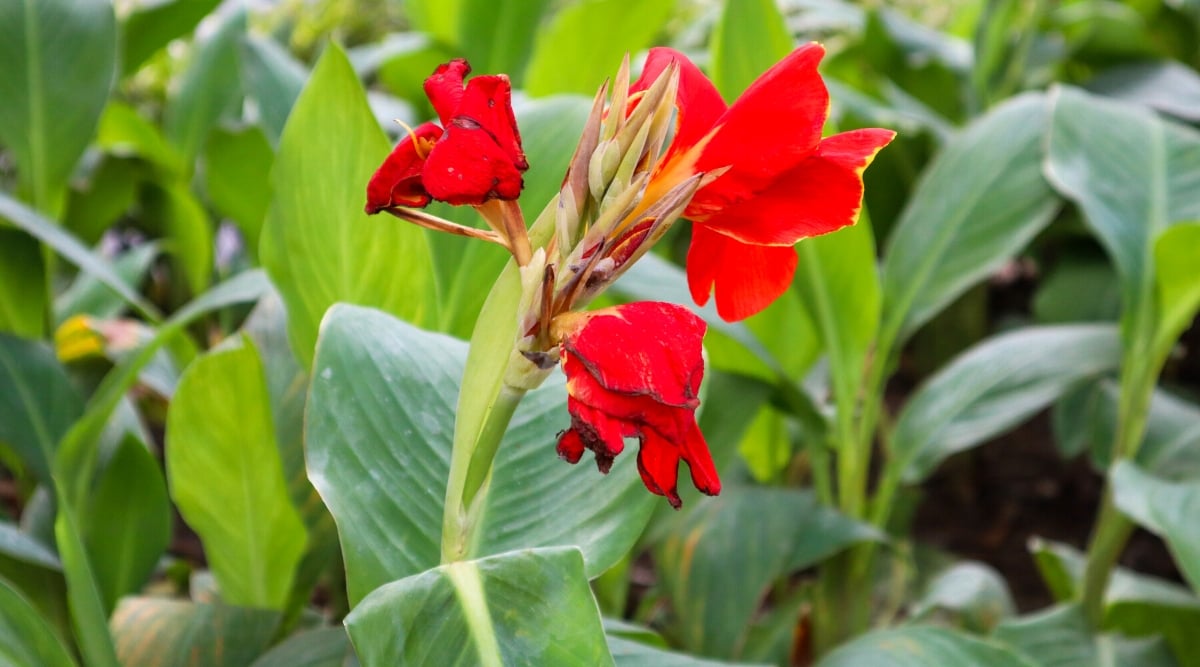
Canna lilies have long, upright, banana-like leaves with green or red coloring. Their flowers are large and showy in shades of orange, red, pink, yellow, and cream. They bloom in small groups atop sturdy stems from mid-summer to fall.
A native of South Africa, canna lily has a sun-loving personality that pairs well with other Spanish garden plants and pueblo-style homes. ‘The President’ has extra large, scarlet-red flowers. ‘Shenandoah’ has a softer tone, with sweet pink blooms and olive green foliage.
This is another genus that contains species invasive to North America. Use caution when planting in the ground, and always consult your local extension office if you’re unsure about its status.
California Poppy
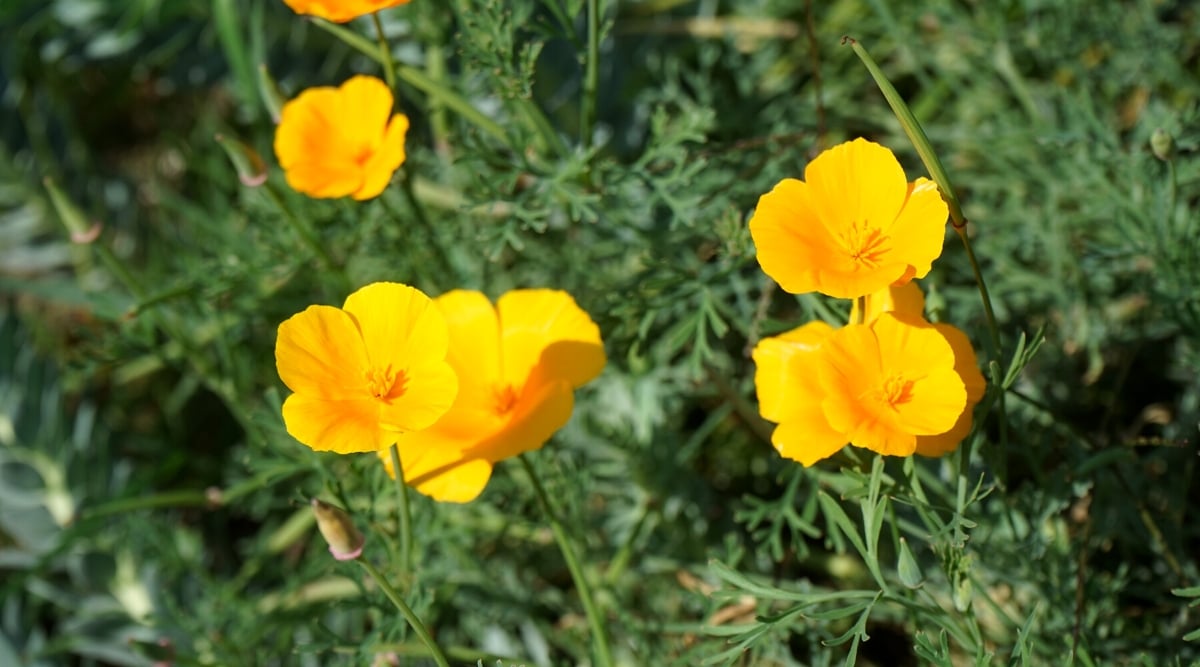
Offering dense sprays of three-inch cup-shaped flowers in shades of yellow and orange, California poppy thrives in hot, dry sun. This iconic plant looks perfectly natural in the courtyard garden of a Spanish-style home.
The flowers close up at night and during periods of rain, only to open when the hot sun returns. The leaves are feathery and light beneath the poppy’s vibrant colored blooms. ‘California Golden’ is a West Coast, U.S. favorite. ‘Mission Bells’ features varying shades of pink, peach, and yellow.
Passionflower
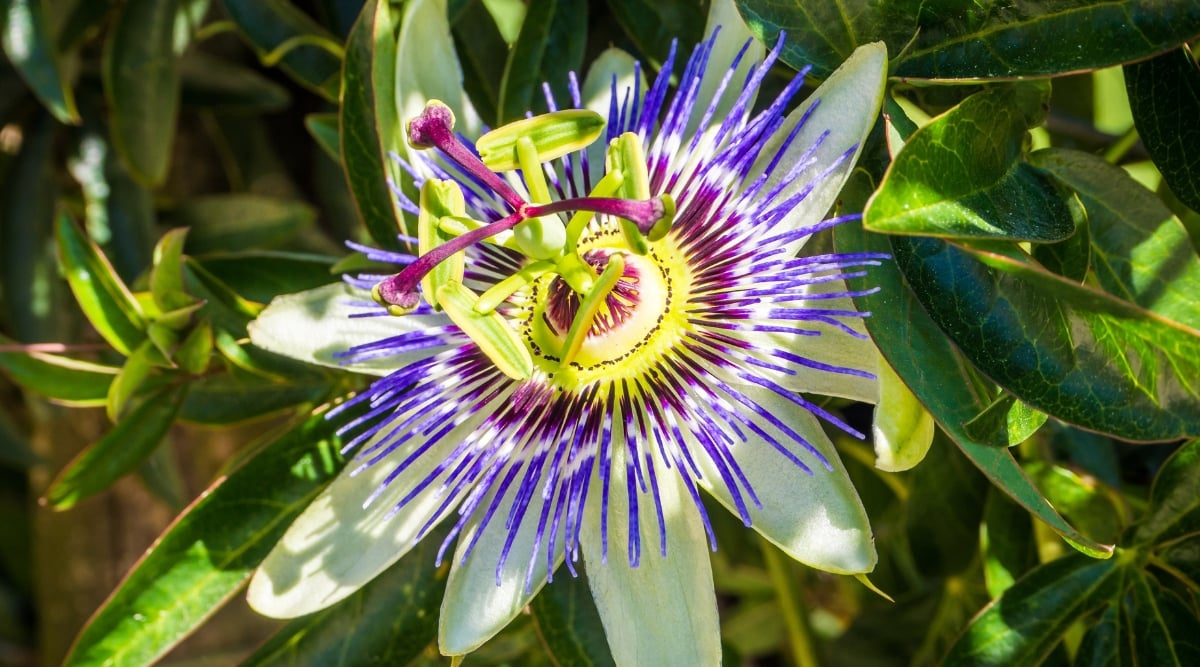
Passionflower is a vining perennial with exotic-looking blooms and a fast-growing habit. Flowers are flat and daisy-shaped with long filaments and a ray of petals fanned out around a central disk. Its coloring is blue, red, pink, white, or yellow.
Vines cling by coiling tendrils and can reach great heights in just a few seasons. Plant ‘Ruby Star’ at the foot of a Mediterranean courtyard pergola, and it will delight you with its vibrant red blooms from mid-summer to fall.
Spanish Lavender
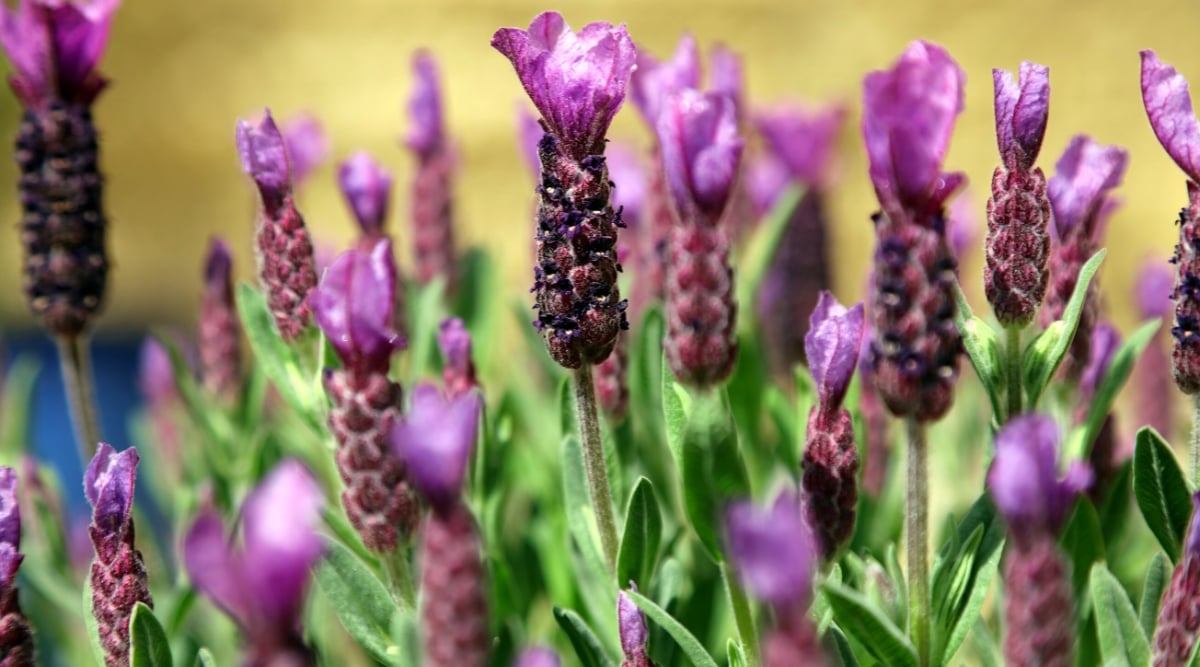
With highly fragrant, silvery green leaves and spikes of dark purple or white flowers, Spanish lavender adds a typical sensory experience you’d expect in a Spanish home courtyard. With its prolific spring and summer blooms, Spanish lavender tolerates intense sunshine and prolonged periods of drought.
Plant ‘Ballerina’ in a colorful ceramic pot for a cheerful specimen plant, or use ‘Strawberry Ruffle’ to line the promenade with pops of purplish-pink.
Jasmine
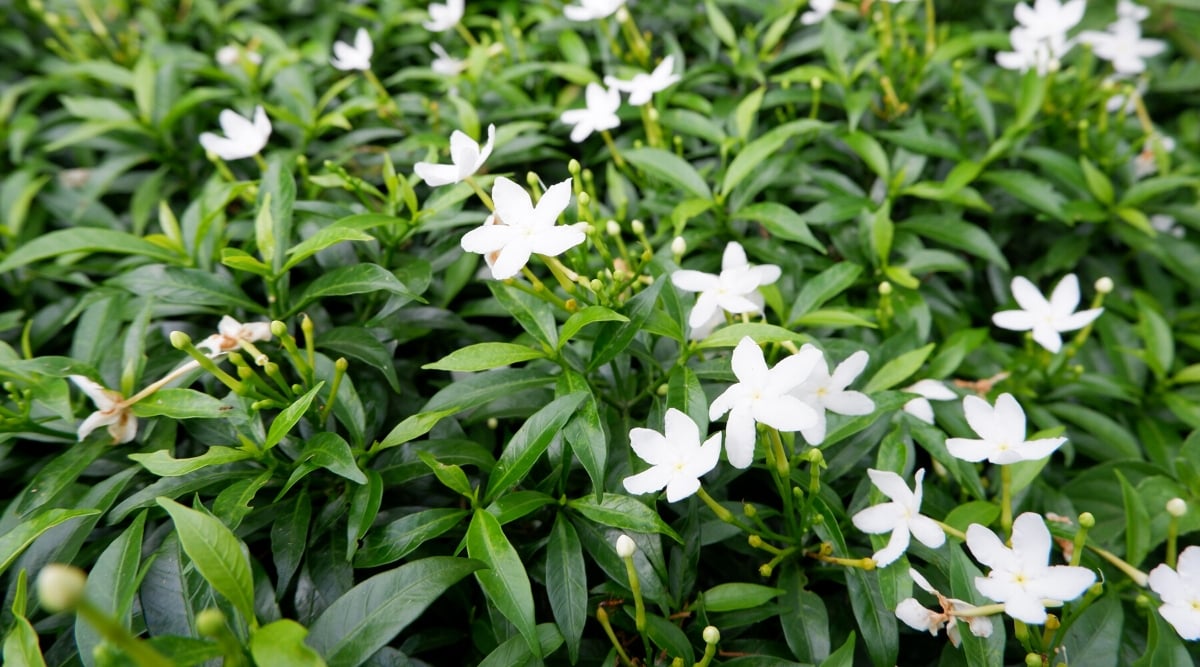
This sweet-smelling plant comes in either vine or shrub form, depending on species and cultivar. As a member of the olive family, it has an exotic profile and fits right into the Mediterranean landscape mix. That also means it tends to take over in certain areas. Check your species against the list of invasive plants in your region.
Offering small, white flowers that are star-shaped with three or five petals, jasmine plants have waxy dark leaves that may be deciduous or evergreen. Plant ‘Jasmine Rex’ for a small-scale vine to climb an adobe wall or ‘Winter’ if your region is less than tropical.
Oleander
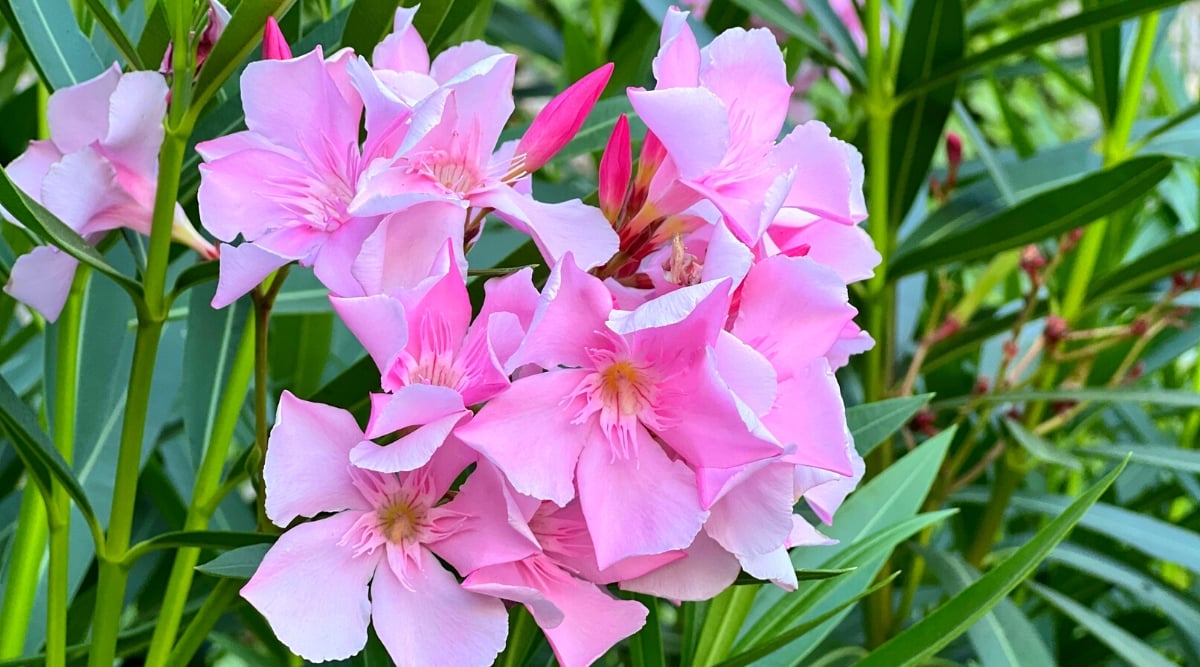
Considered a shrub or small tree, oleander has a wide-spreading habit that makes it an ideal screening plant. Its lance-shaped, waxy green leaves are four to seven inches long and have a palm-like appearance. Its flowers are red, pink, white, yellow, purple, and orange, with five petals and a deep, fluted throat.
With a high tolerance for salt and heat, oleander performs well in a Spanish coastal garden. Try ‘Petite Pink’ for smaller flowers in a pastel hue or ‘Variegata’ for green and white leaves.
Agave

With more than 250 species in the Agave genus, there are plenty of varieties to complement the Spanish home aesthetic. Prized for its syrup-making potential as well as its spiky structure, agave soaks up the sun like a champ and requires very little maintenance.
Flowering is sporadic, with some species blooming only every 30 years, but when it happens, you’ll be treated to a magical spike of yellow flowers that might reach heights of 20 feet or more. ‘Weber Azul’ has sharp, blue leaves that pair nicely with terra cotta tile.
Prickly Pear Cactus
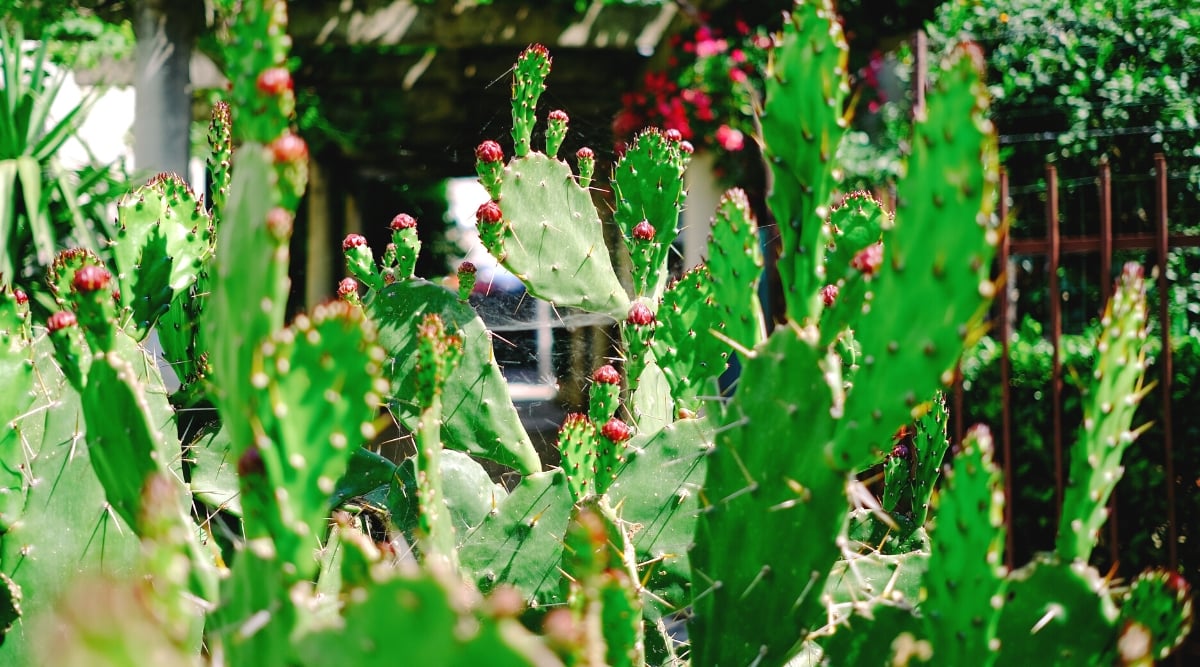
With wild variations in height, a prickly pear cactus can play the role of a potted plant, specimen tree, or small shrub in the Spanish-style garden. Its leaves are like large, flat paddles with spiny surfaces, growing upward as offshoots from one another.
The flowers are showy in hues of orange, yellow, and red. Prickly pear cactus demands dry, sandy soil and looks natural outside Spanish-style homes in arid regions.
Mediterranean Fan Palm
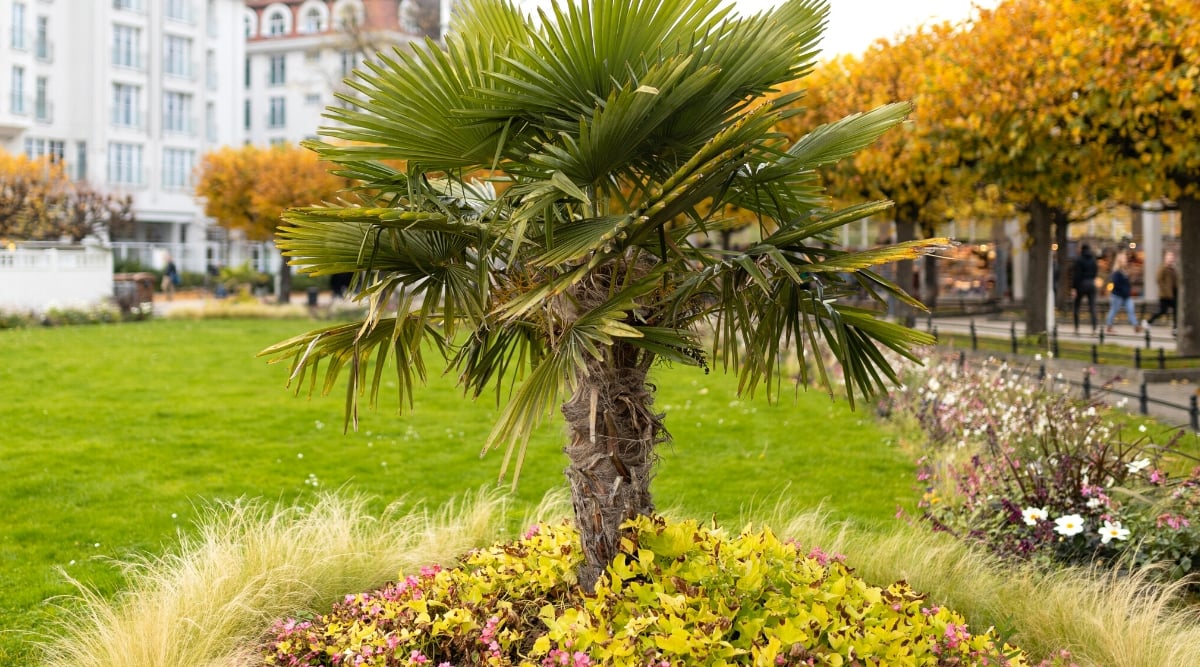
A great choice for a corner planting to block headlights or screen a neighbor, Mediterranean fan palm spreads horizontally by offshoots to consume a large area over time. Its densely arranged, two-foot fronds are triangle-shaped and have a pretty blue-green coloring. Its trunk is rough and texturally interesting.
Prune off wild shoots as soon as they emerge and you can train a Mediterranean fan palm into a traditional single-trunk tree form that will grow taller and provide more shade.
European Pear
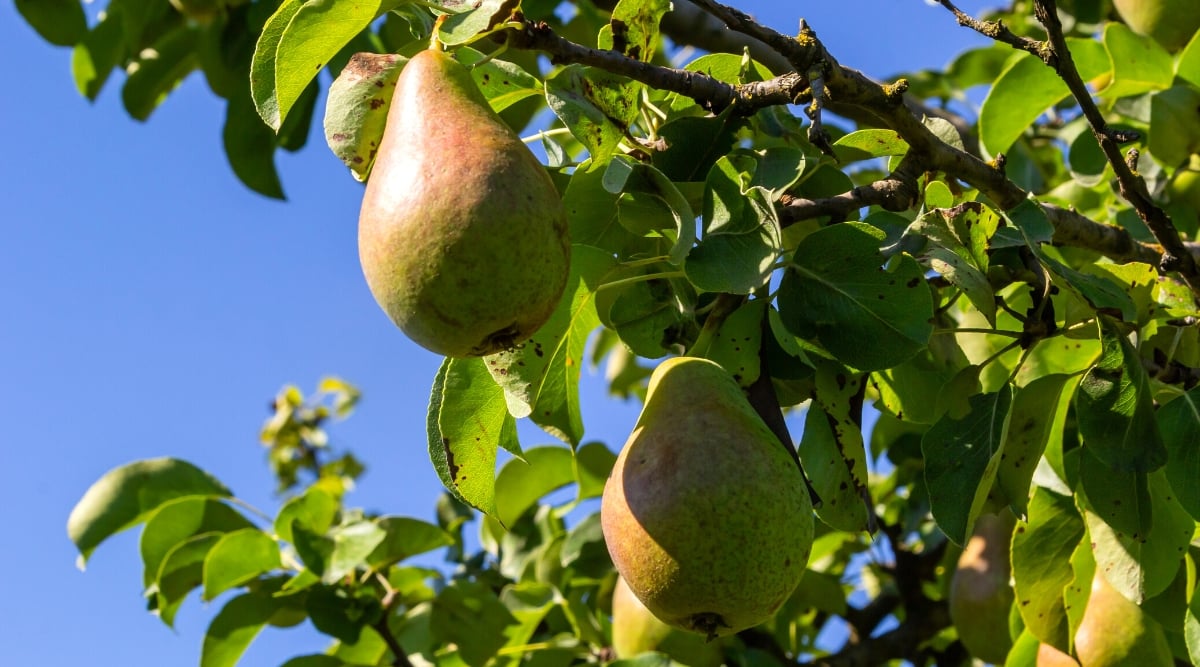
Mature size varies among cultivars within this European pear genus. The plentiful fruits have a traditional teardrop shape, meeting the Spanish garden preference for edible plants. Leaves are long and oval-shaped with serrated margins.
The flowers are small and white, appearing in spring and emitting a strong scent that is off-putting to some but delightful to others. ‘Kieffer’ tolerates both drought and flooding, so it’s perfect for coastal applications. Plant ‘Moonglow’ if you’re looking for fast growth.
Common Fig
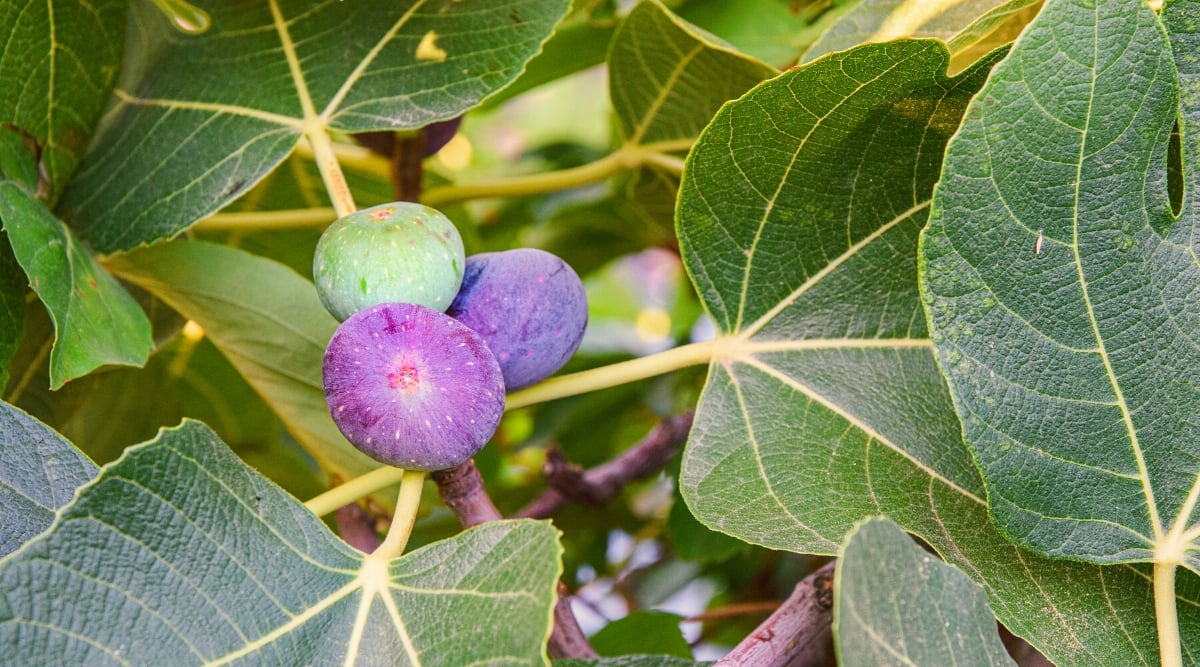
Another edible must-have in the Spanish-style home garden, the common fig has a spreading, shrubby habit. Fruit is produced in late summer or early fall on new wood and is typically between two and four inches long.
Leaves are large and deeply lobed with a palmate structure resembling a hand. Although this plant is known for dropping leaves and being a little messy, it is very productive and attractive. Grow ‘Little Ruby’ in a terra cotta pot near the back door or ‘Brown Turkey’ if your winters are chilly.
Lemon Tree
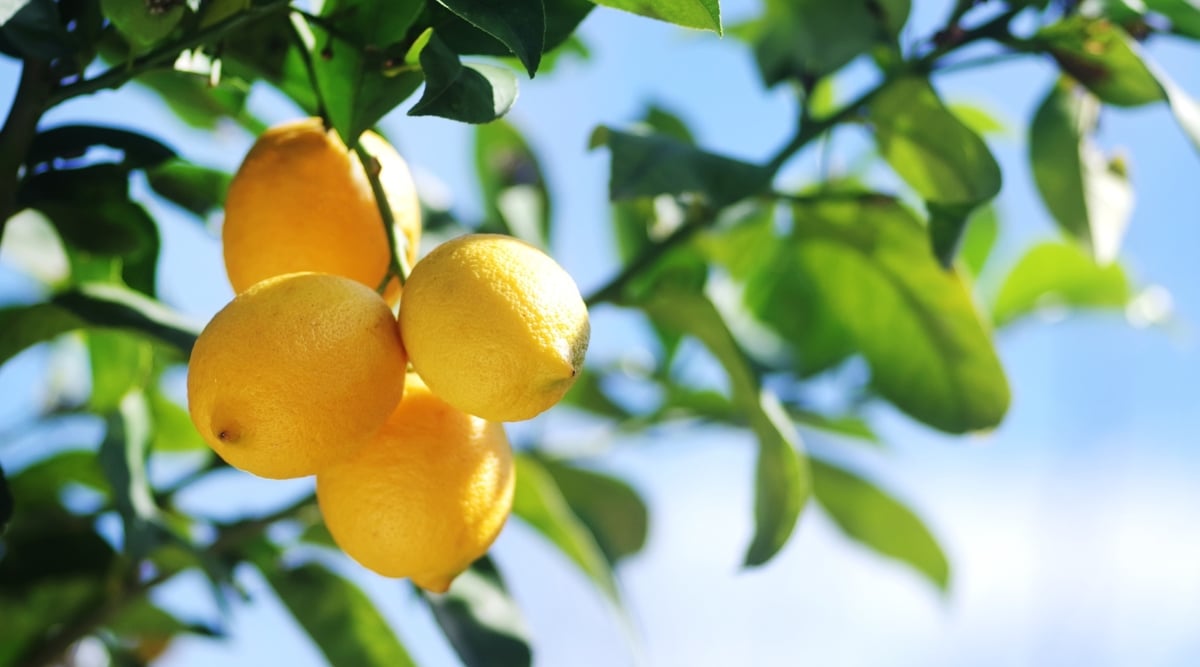
No Spanish garden would be complete without a citrus plant that’s ripe for the picking. Delightful in both sight and scent, a lemon tree begins the active season with brown leaves and small white or pink flowers and matures to dark green leaves with cheerful yellow lemons.
It loves the sun but requires some protection from the wind, so plant it next to a wall. Plant it in a large, colorful pot that’s well-drained or directly in the ground. ‘Meyer’ has a bit more cold tolerance and sweeter fruit than many lemon tree varieties. ‘Lisbon’ has few to no seeds.
Floribunda Rose
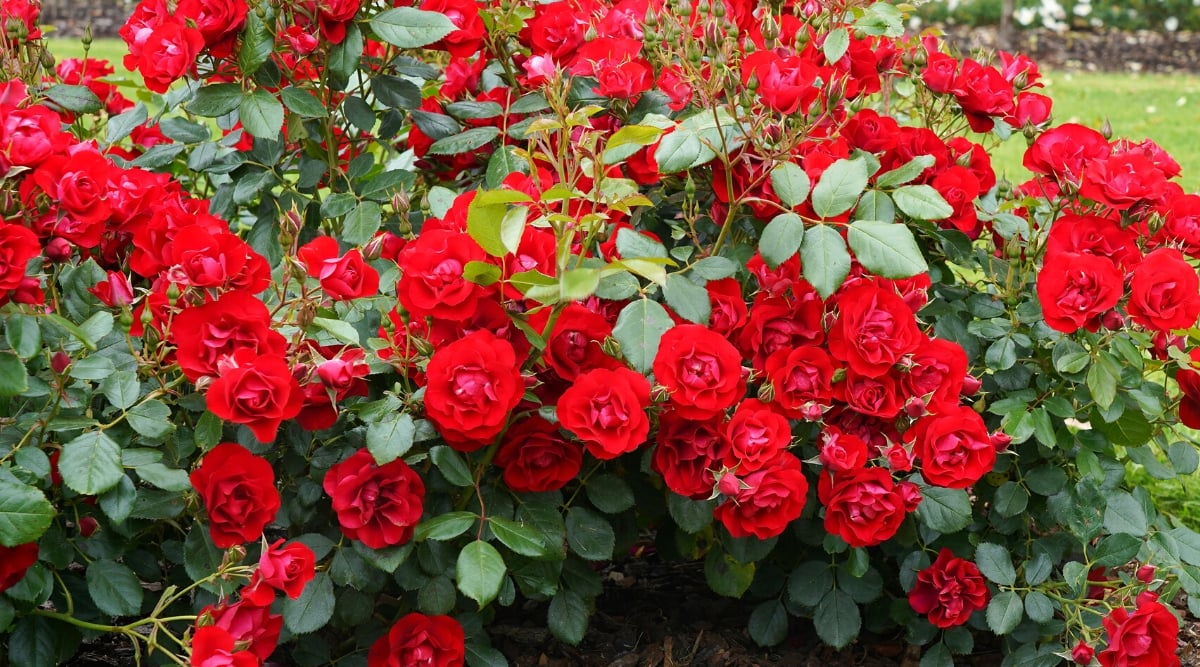
This repeat blooming rose works as a hedge or border planting in the Spanish-style garden. On each plant, semi-double blooms cover the surface with vibrant color and give off a light, sweet tea scent. Leaves are small and serrated with a dark green to bronze color that yellows in fall.
Good drainage is a must-have for this sun-lover. It will tolerate a container on the patio, but must be kept moist. ‘Julia Child’ has yellow flowers and a licorice-like scent. ‘Iceberg’ has snow-white blooms.
Mexican Feather Grass
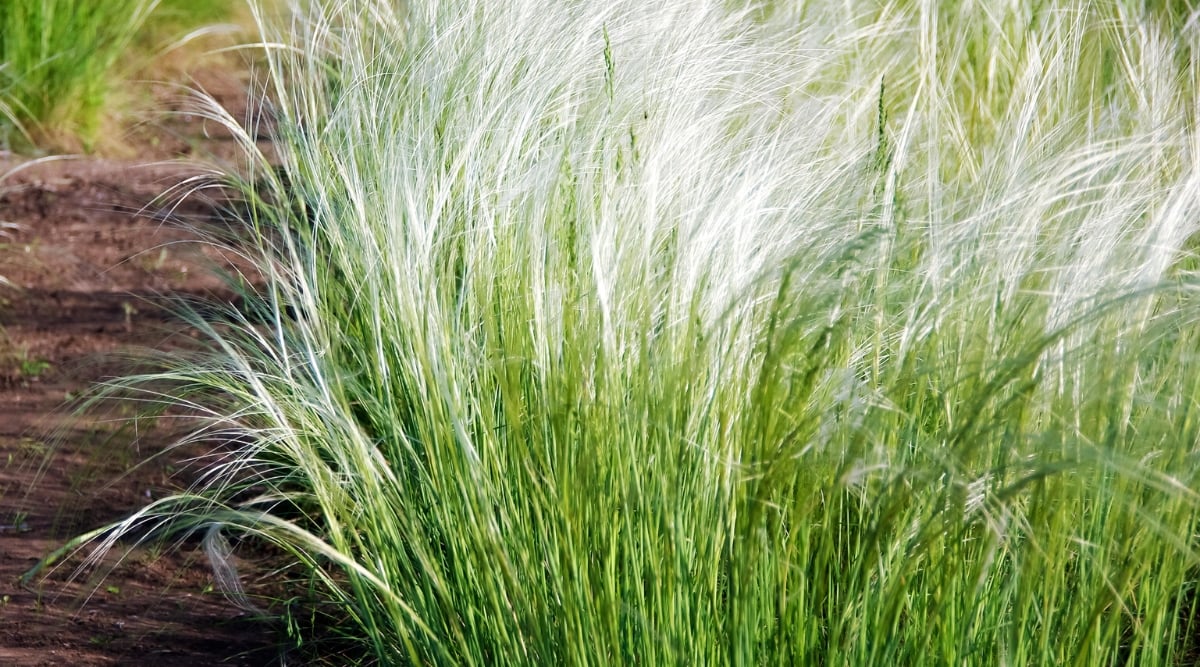
Lending softness and movement to a landscape that might otherwise feel harsh for its hardy plant content, Mexican feather grass is a dense mass of hair-like leaves that curl inward and fan outward.
Although it works wonderfully with the Spanish aesthetic and pairs well with other heat-tolerant plants, it spreads liberally by seed and requires diligent maintenance. Check the invasive species watch list in your region before planting.
Basil
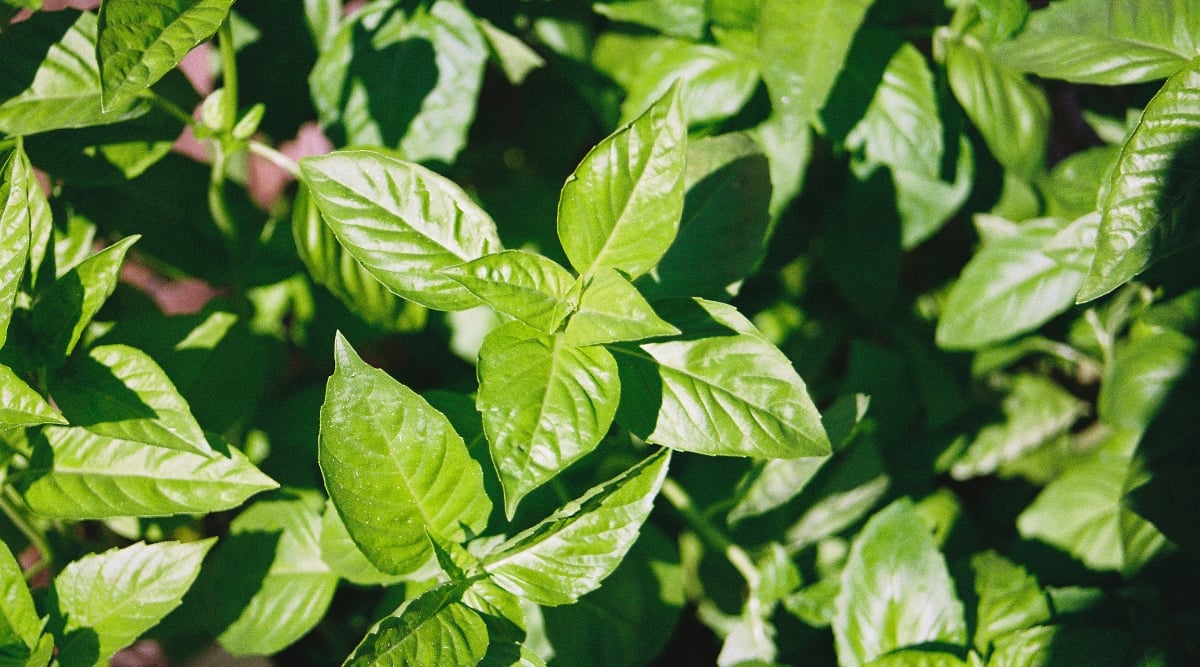
No Mediterranean kitchen garden would be complete without a mound of sweet-smelling basil in the mix. This member of the mint family spreads easily and returns perennially in zones 10-11 but is grown as annual in cooler climates.
Leaf color varies from bright green to dark burgundy, depending on the variety. Flowers are insignificant and should be pruned to encourage more robust foliage. Plant ‘Mexican Spice’ for a strong cinnamon scent or ‘Rutgers Obsession’ for a compact habit.
Chives
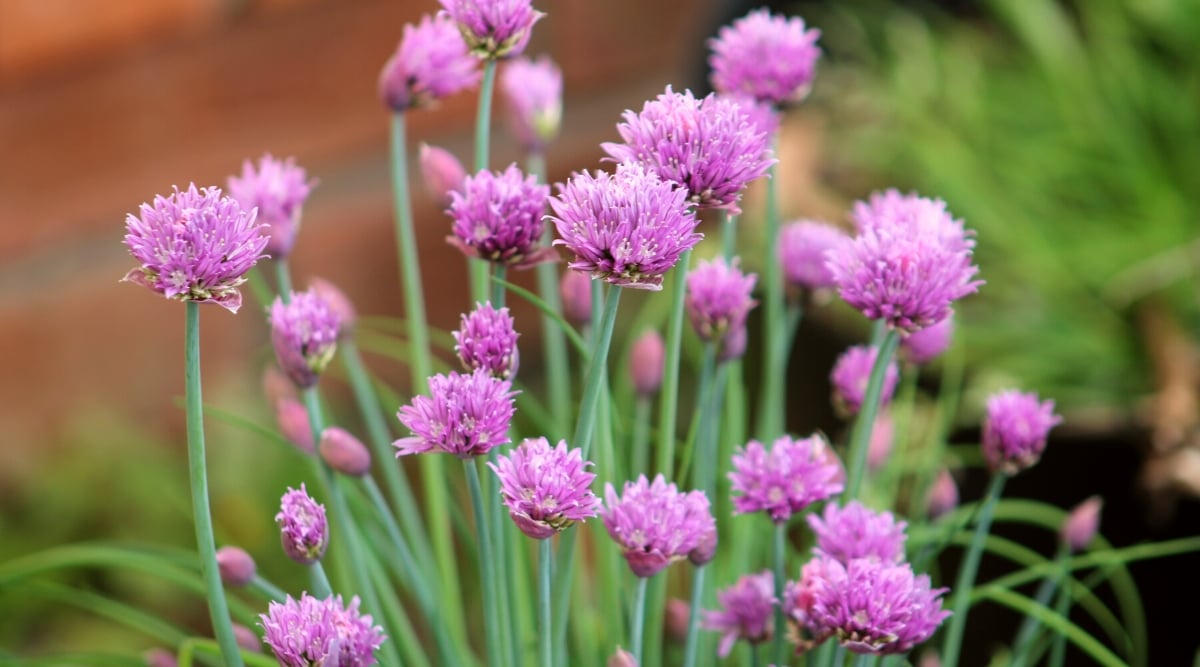
Since sensory-stimulating plants are a priority in Spanish-style garden design, you’ll often find chives in the landscape. Whether potted in a colorful ceramic bowl near the kitchen door or worked into a symmetrically divided herb garden, chives deliver the scent, taste, color, and texture that a Spanish home garden demands.
Easily snipped off and thrown into soups, salads, dips, and spreads, chives replenish themselves quickly. They can also be planted as a grass substitute but must be maintained meticulously to prevent unwanted spread!
Thyme
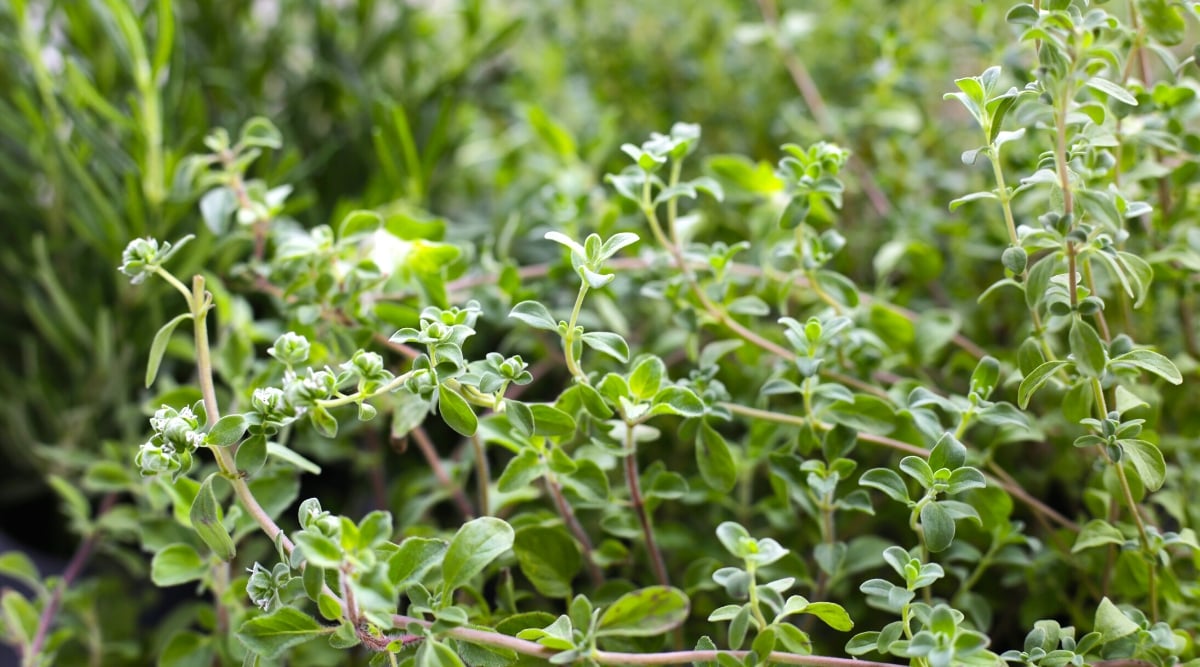
There are roughly 350 species of perennial thyme, and most will look completely at home in the Spanish-style garden. Most have small, ovate leaves in colors ranging from bright green to dark purple. Some sprawl and creep to act as ground cover, while others mound up like a small shrub.
Thyme flowers are pink, purple, or white and should be pruned off to encourage leaf production. ‘Woody Thyme’ has no scent and grows well in and around landscape steppers. ‘Creeping Thyme’ covers a large area to suppress weeds and keep the soil cool.
Rosemary
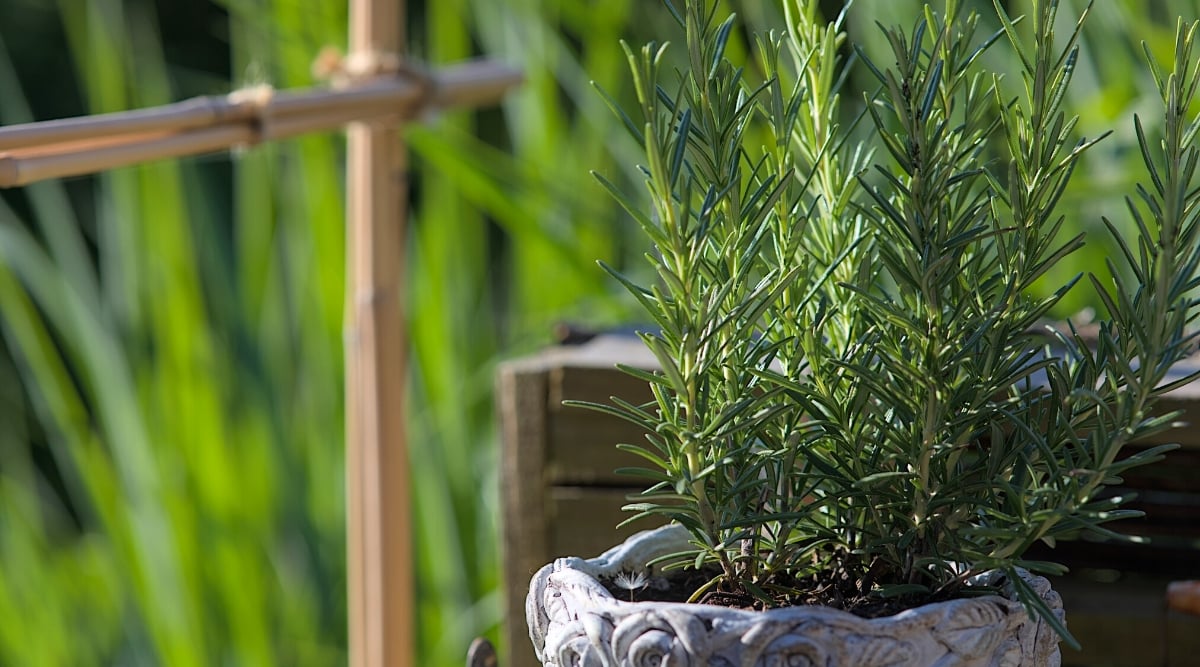
This aromatic evergreen offers year-round color, texture, and a pine-like scent. It can be harvested aggressively for inclusion in many Spanish-style culinary offerings or sheared into shrub form. Its leaves are needle-like and blue-gray, providing a soft wispy cushion beneath spikes of purple or white flowers that bloom in mid-summer.
Heirloom rosemary attracts pollinators that are vital to the flower production of other plants in the Spanish-style garden. Plant ‘Severn Sea’ in a row of three or five to create a small hedge that delights the senses. ‘Albus’ offers white flowers if the garden’s bright tropical hues need a neutral foil.
Tomato
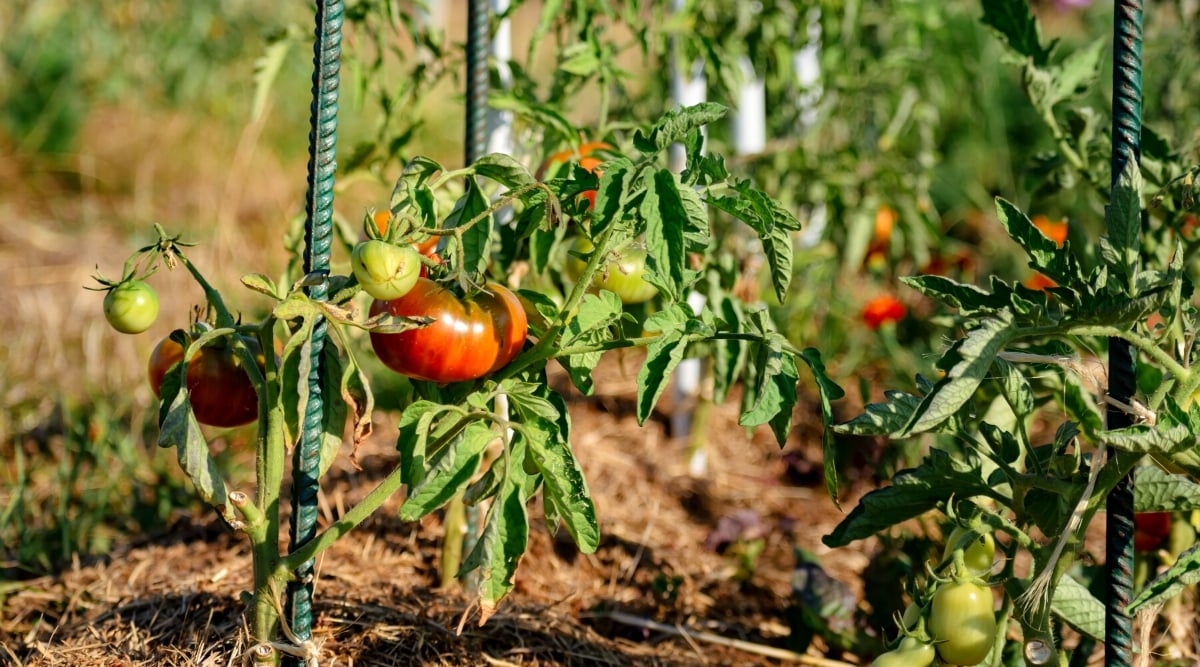
A fruit we often associate with Mediterranean cuisine, the tomato is a must-have in the Spanish-style garden. Varying in height and fruit size from dwarf to giant, tomato plants bring a pop of excitement to the landscape and provide an immediate snack to anyone whiling away the hours in a courtyard chaise lounge.
Some varieties take well to being espaliered on a trellis or screen, should space be a consideration. Others resemble a bushy shrub if left to their own devices. ‘San Marzano’ is full of flavor and popular for sauces and salsas, while ‘Roma’ slices up nicely in a caprese salad.
Final Thoughts
When planning a garden for your Spanish-style home, prioritize plants with a high tolerance for heat, make space for fresh herbs and fruits, and include some trees to provide shade. Choose plants that flower in bold, exotic colors and vary in foliage shade and texture. Let a whimsical vine scramble up the stucco or drape one over an archway, and your senses will thank you for the experience!



